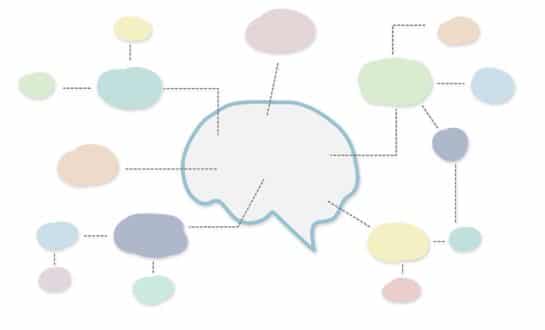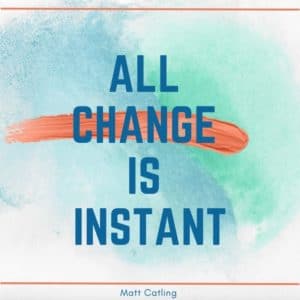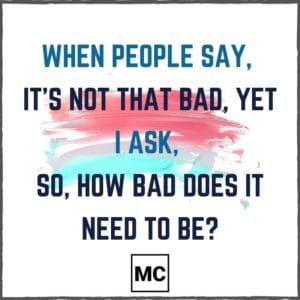

What is NLP and what is it used for?
Table of Contents
Richard Bandler and John Grinder created NLP (neuro-linguistic programming) in the US in the 1970s as an approach to communication, self-development, and psychotherapy.
Bandler and Grinder recognised that it was possible to map our internal patterns of thoughts that led to certain behaviours and outcomes. They developed a successful pathway of excellence, where they uncovered the neural and subtle communication patterns of successful individuals and used that as a blueprint that anyone (and I do mean anyone) can replicate and get successful outcomes themselves. It is also possible for these techniques to be taught to others so they can achieve excellence in their lives, which is where coaching comes in.
You’ve heard of mind over matter: NLP is the blueprint of mind that gets winning results.
Since its creation, NLP has become increasingly popular, especially with fast and effective treatments of phobias and anxiety disorders, improving work performance and activating personal happiness.
A big factor behind its popularity is that it addresses a wide range of diverse problems. NLP is not one rule or one system, but a wide variety of tools and techniques that can be flexibly applied to combat any personal struggle or obstacle. There is an incredible condense that comes with this training because you know, without doubt, that you can smash through anything that is put in front of you, so that problems, even ones that felt impossible to face before, become challenges you encounter to test your skills and encourage personal growth and continued self-discovery. It’s a gift that continues to give for the rest of your life.
Most people look back on their life with regret in their old age. It doesn’t need to be this way. You can take control of your internal thoughts and change them to be empowering.
Another reason for the success of NLP is that the results are immediately evident. This is a binary process, it either works or it doesn’t. You know straight away if it’s effective. This enables people to see results immediately and make changes instantly. It’s a really exciting realisation that all change in NLP is instant.

You may have been hooked on emotional baggage for decades and you are able to let it go in 10-15 minutes and be free of it forever. This binary effect also helps students immediately identify when a technique needs to be adjusted or if another NLP tool will be better applied in a particular instance.
What can NLP be used for?
At the highest level, NLP can be used for personal development, phobias, and anxiety.
It can also be used to change personal habits, overcome frustrations and minor fears, heal past hurts and revisit old memories to extract positive lessons of growth and acceptance. You can also understand yourself and others incredibly well. Knowing yourself and what drives your behaviour is a solid platform for change. Once you understand why you do what you do it becomes much easier to align your goals with your inner power and get immediate results as well as understand how to make strong, lasting and genuine connections with others.
You can easily eradicate negative thoughts and replace them with positive ones, open more opportunities for problem-solving, and bring together fragmented parts of your inner self. So much of the conflict within us started when we were kids. In fact, most of our confusion and pain is generated from things we saw, heard or believed under the age of seven. We didn’t have the resources we needed as kids to really understand our environment or the bigger picture, so many of the beliefs we formed in that early stage of life are false and continue to impact us negatively. Things like:
- I’m not worthy
- I’m stupid
- I have to be quiet
- I’ll be punished if I ask for what I need
- I’m a problem
Sometimes we fight back against these lessons and give our parents and teachers hell, but sometimes we don’t fight back, we accept what we heard, felt, saw and experienced as truth, and we might never go back and question the rules we made for ourselves. Maybe part of us is outgoing and loud, but another part feels a strong fear about acting this way and demands that we sit quietly and be obedient. This war within can take up so much of our energy and demand so much attention, trying to second guess what is right and wrong behaviour, so that we never get anything else done.
NLP can be used in a number of ways to quieten the voice inside that stops us from being our true self. You can use hypnosis to coax out your true self and feel comfortable in your own skin, or a ‘like to dislike’ pattern to reduce the unwanted voice to something silly and far away, you can use parts integration to understand both of these images of self are useful and truth and can work in cooperation, ending the war and enabling you to choose your reactions and responses based on the situation you are in, or you can use TimeLine Therapy to revisit that moment where you make that decision to be quiet and sit still and bring more options and a deeper level of understanding to your six-year-old self.
NLP is about creating choices. Where you decide to go from there is entirely up to you, the point is you see and experience more options that give you greater freedom, flexibility and responsiveness.
How does NLP work?
NLP makes it easier for people to change their thoughts and actions through perceptual, behavioural, and communication techniques.
NLP relies on language processing to uncover more options and deliberately create a form of language that is empowering and resourceful, i.e. rather than having the internal dialogue of, “I can’t do that”, asking, “How can I do that?”.
| Negative internal language
that is limiting and restrictive |
Positive internal language that is empowering and provides choice |
| I don’t know the answer. I’m too stupid | I don’t know the answer, where can I find more information to learn? |
| I could never afford that | I can create a plan to afford that |
| That’s a stupid idea | That’s a great start. What other things can we try? |
| Nobody here likes my idea. My idea must be worthless | This isn’t the right group for me. Where can I go to find the right people to support me? |
NLP is founded on the idea that the map is not the terrain. Our internal maps (the learned pathways of beliefs, behaviours and thoughts in our minds formed by experience) can be limiting if we believe that our personal map is the entire world. What we experience is just a tiny slice of what is available. There is an endless range of knowledge and information outside of our maps, out there experienced by others in the bigger world. Exploring past our own map gives us more options, better research and more pathways to success.
NLP aims to detect and modify unconscious biases or limitations of an individual’s map of the world to get positive and rewarding results. What ‘success’ is varies greatly from person to person. It’s about identifying how you want to live and seeking out people who are achieving what you like and what aligns with your personal values. This could be in:
- Business
- Career
- Emotional well being
- Health
- Wealth and finances
- Relationships (both with self and others)
- Internal balance, harmony and spirituality
Through the conscious use of language (including subtle language use like body language, tone and expression), NLP brings about changes in someone’s thoughts and behaviours to get desired and rewarding results.
Our map is created using a number of communication strategies. One of these is our preferred representational system (PRS) that typically relies on one sensory system for understanding our environment and communicating internally as well as externally. The main representational systems are visual, auditory tonal, kinesthetic and auditory digital (self-talk). There is also taste (gustatory) and smell (olfactory). These can be detected through language use:
- I see what you mean
- I hear what you are saying
- I have a gut feeling you are right
- That makes sense to me
As well as through eye patterns.
You may have heard about how in interrogations it is possible to tell if someone is lying by their eye movements. This is not strictly true. This is an NLP technique for reading where someone goes to access information. If someone looks up and to the right they are most likely relying on a picture in their memory, if someone looks up and to the left, they are most likely relying on a picture they are creating fresh in their mind. We can tell this person has a visual PRS. We then know that the best way to communicate with them is through visual cues:
- Let me paint a picture for you
- Can you see things from my point of view?
- Let’s see what we can do to improve your situation
If someone looks to the right side they are most likely accessing a sound from memory- dialogue they heard for example. If someone looks to the left side they are most likely accessing new information freshly created about sound. This person’s PRS is most likely auditory tonal. We can communicate effectively with them by saying things like:
- I hear your concerns
- It sounds like you’ve given this plan a lot of thought
- Listen to what you are really saying
An NLP practitioner can use this knowledge of their client to help with effective goal setting strategies, build rapport or help their client gather life-changing internal information.
What are some NLP Techniques?
We have mentioned some of the techniques used in NLP already, however, there is an amazing toolkit of resources you will uncover and can harness to see success in yourself or to help others choose a pathway of success for themselves.
NLP techniques include:
Rapport – Mirroring and matching physical behaviour and expressions to increase response and communication through empathy.
Swish pattern – Creating desired emotions around change so that change in behaviour and action is desirable and easily achievable.
Anchoring – Linking emotional states to sensory triggers to call upon desired emotions when needed.
Like to dislike – Using abstract representations to shift something to the background. Especially good for breaking negative food habits.
Meta Model questions – Specific questions that uncover deletions, distortions and generalisations in language to bring more choices.
Pattern interrupt – Inserting a new pattern into old unwanted actions so that it becomes easy to break habits and create change.
Fast phobia – Quickly and effectively eradicating the illusion of fear that holds us back from making a change or taking action.
Hypnosis – Using phrases and communication patterns to create internal change by bypassing logic and speaking in abstract form
Time Line Therapy – Understanding the patterns of emotion that form from early beliefs and re-experiencing the event to bring about learning to unhook emotions from events, so they are simply events.
NLP works as a personal development tool by developing skills for self-reflection, self-awareness, confidence, and communication.
Once we can see the internal patterns that are holding us back it’s easy to create change and set our sights on positive outcomes. The problem is most people run on auto-pilot, living on their own limited map of the world without ever questioning the internal beliefs and communications that are getting unwanted results. The change is easy because it is so natural.
We intrinsically want to live a life of success and happiness. We just need to learn how to switch our minds over to thinking empowering thoughts that will open options and give us flexible choices.
There is really only one rule for NLP to work and that is consent. You must be wholly willing to see and experience change. If not, nothing will change your mind. NLP can also be useful for losing the grip on old habits and behaviours that will lead to a desire for change down the track, however, every participant in NLP must be willing and ready for change. Without this consent, it’s basically like banging your head against a brick wall.
For those people who are not ready, that’s okay. What I have experienced is that they have not been through enough pain, yet. There will come a point when the chaos in their life becomes so great they have to change, or when they have endured enough pain in their present patterns they are ready for something different to happen. Until that time, it is their choice to make and continue to make.
You always hear the same thing from people not ready. “It’s not that bad, yet”. I hear this and I know they know they are on a downward slide and eventually it will be that bad. It’s a matter of how long before they reach that point where they are driven to see better results.

My Excellence Now NLP course in Sydney is a hands-on NLP training completed in-person where you get to see these techniques in action in the room and practice on your classmates and have them practice on you. Seeing both sides of the process as well as live demonstrations creates the best learning environment that is submersive and high impact.
As well as learning incredible techniques that will transform your life and the life of your future clients, you also meet amazing people and develop life-long friendships!
Join our free Facebook group to become part of a community of high achievers who are taking their leadership skills to the next level!






